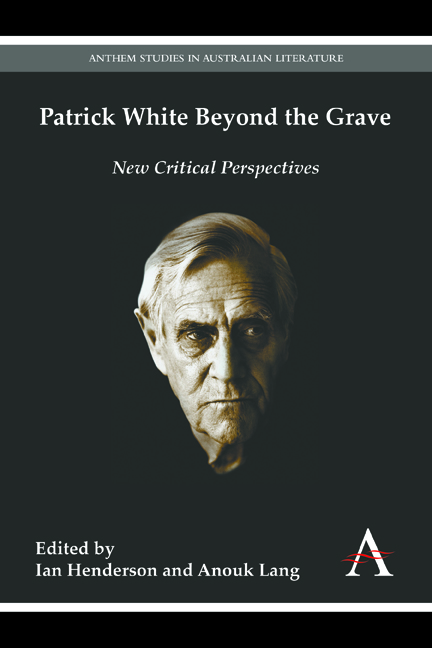Book contents
- Frontmatter
- Contents
- Acknowledgements
- Introduction
- Part I RESURRECTED PAPERS
- Part II MANY IN ONE
- Part III THE PERFORMANCE OF READING
- Part IV QUEER WHITE
- Chapter 11 Knockabout World: Patrick White, Kenneth Williams and the Queer Word
- Chapter 12 Queering Sarsaparilla: Patrick White's Deviant Modernism
- Contributors
- Index
Chapter 12 - Queering Sarsaparilla: Patrick White's Deviant Modernism
from Part IV - QUEER WHITE
Published online by Cambridge University Press: 18 January 2018
- Frontmatter
- Contents
- Acknowledgements
- Introduction
- Part I RESURRECTED PAPERS
- Part II MANY IN ONE
- Part III THE PERFORMANCE OF READING
- Part IV QUEER WHITE
- Chapter 11 Knockabout World: Patrick White, Kenneth Williams and the Queer Word
- Chapter 12 Queering Sarsaparilla: Patrick White's Deviant Modernism
- Contributors
- Index
Summary
Within the body of scholarly work on Patrick White, there is a considerable amount of research which locates him with respect to literary modernism, a relationship as contested as the term ‘modernism’ in itself. A somewhat smaller but still significant body of scholarship exists which understands him in the light of gender studies and queer theory. It is surprising that these two bodies of work are almost entirely separate, given that within what has been termed ‘the new modernist studies’ the rise of queer modernisms as one of its emerging sub-fields has been concomitant with a period in which modernist scholars have begun to pay more attention to literary experimentation outside its traditional areas of geographical focus, Europe and the United States. As Heather Love remarks in a 2009 issue of PMLA, queer modernism may be simply another name for modernism: ‘[o]f all the forms of marginal modernism that have surfaced in the past couple of decades, queer modernism seems particularly likely to merge into modernism proper.’
In this chapter, I want to argue the case for connecting these two ways of understanding White's work by seeking to place him within the field of queer modernist studies. This is neither to ignore previous work on White nor to make a claim to supersede it, but rather to situate it in a new frame. Two things are achieved by this move. First, it is a means of bringing White to greater prominence and giving him the visibility he deserves within the global conversations occurring around modernist studies outside Australian literature. Second, it is a way of enriching global modernist studies, whose idealistic proclamations of the need for scholars to expand their geographical horizons do not always match so well with, for example, the largely American and Eurocentric line-up of papers at the annual Modernist Studies Association conference. This strategic approach is, of course, quite apart from the fact that White's work is extraordinarily rich in its inventiveness and its stylistic and syntactic transgressiveness, and therefore worthy of wider dissemination on its own merits as well.
- Type
- Chapter
- Information
- Patrick White Beyond the GraveNew Critical Perspectives, pp. 193 - 204Publisher: Anthem PressPrint publication year: 2015



